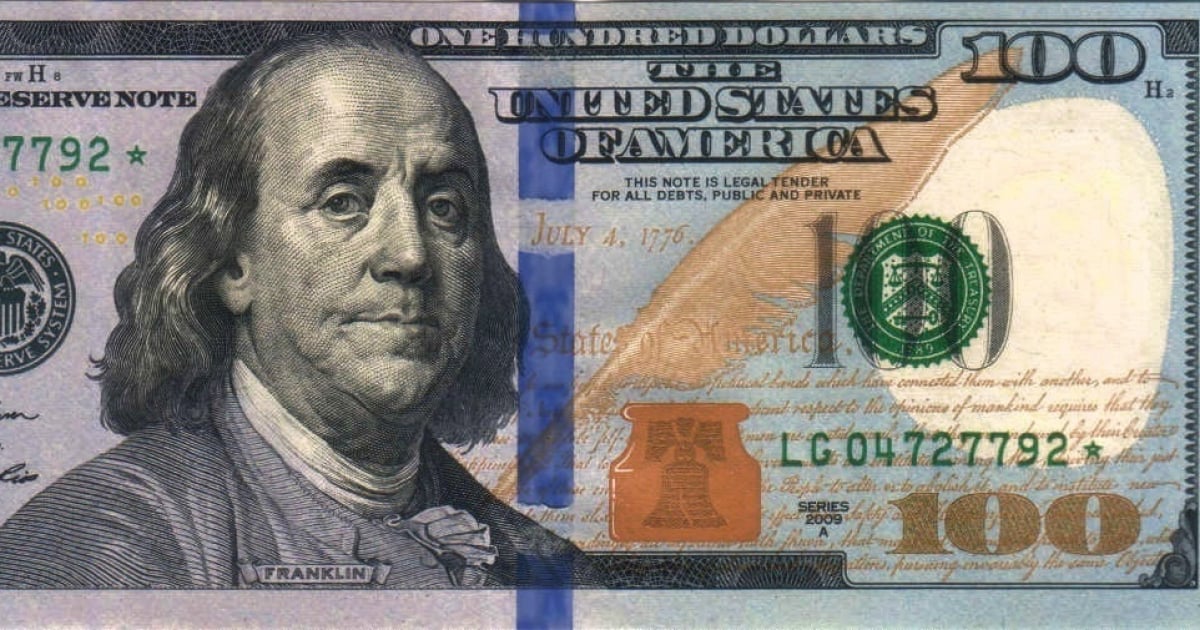
Related videos:
A Cuban was arrested in the municipality of Jovellanos, in the province of Matanzas, after attempting to pay in a café with a counterfeit hundred-dollar bill.
The news was announced by the official Facebook profile "Con todos la victoria," which identified the alleged scammer as Alexei Martínez Elizalde.
The note only mentioned that the individual attempted to play "the sly one" and buy drinks at a café in the La Luisa Council and pay with a counterfeit hundred-dollar bill, which he was unable to do.
The report indicated that the man was arrested, but did not provide any other details about the origin of the bill nor did it state that an investigation is underway.
As of the closing of this report, there are no further details about the case.
Although reports of counterfeit Cuban pesos are more common, this is not the first time in recent years that an attempt to scam with counterfeit hundred-dollar bills has come to light.
In 2023, three individuals were arrested in the province of Sancti Spíritus for selling counterfeit hundred-dollar bills on the black market, which they promoted through the classified ads website Revolico.
In that case, those involved sold, on average, to each of the affected individuals between 800 and 1,500 counterfeit dollars at prices ranging from 160 to 170 Cuban pesos per dollar, according to the informal exchange rate at that time.
Five victims have been identified, three residing in the municipality of Sancti Spíritus, one in Taguasco, and another in Cabaiguán, as reported by the local newspaper Escambray.
The source stated that the scammers' profits reached up to 160,000 pesos for each sale of counterfeit dollars.
How to detect counterfeits in hundred dollar bills?
The hundred-dollar bills, featuring the iconic image of Benjamin Franklin, are the highest denomination currently in circulation in the United States.
Their popularity and widespread distribution make them one of the main targets for counterfeiters.
Security features to verify authenticity
To avoid falling into the trap of counterfeit bills, the United States Federal Reserve has implemented various security measures on hundred-dollar bills.
These are the main characteristics that should be reviewed:
Watermark: When viewing the bill against the light, you should see the image of Benjamin Franklin as a transparent watermark.
Security thread: It includes the inscription "USA" visible when the bill is held up to the light.
Numbers that change color:En la esquina inferior derecha del billete, el número 100 cambia de color entre cobre y verde al inclinarlo ligeramente.
Bell in the Inkwell: When tilting the banknote, the bell located inside the inkwell on the front design should appear to vanish and reappear.
3D Security Ribbon: A blue ribbon on the front of the bill displays images of bells and the number one hundred that appear to move when you tilt the bill. Important: this ribbon is not printed, but woven into the paper.
Microprinting: Tiny details around the bill, such as the text The United States of America, are visible under a magnifying glass.
Embossing: When touched, the banknote has a distinctive texture due to the embossing in certain areas of the design.
Frequently Asked Questions about the Counterfeiting of One Hundred Dollar Bills in Cuba
What are the security features of the hundred-dollar bills?
One hundred dollar bills incorporate several security features, such as the watermark of Benjamin Franklin, a security thread visible when held up to the light, color-changing numbers, a bell inkwell that disappears and reappears, a 3D security ribbon, microprinting, and a raised printing. These measures make counterfeiting difficult and ensure the reliability of the bill.
What are "washed" bills and why are they difficult to detect?
A "washed" bill is a genuine banknote from which the original markings have been removed to reprint it with a higher denomination. These bills often pass the "pen test," as the paper is real, so it is advisable not to rely solely on this method to verify authenticity.
What additional measures can be taken to verify the authenticity of a hundred-dollar bill?
In addition to reviewing security features, it is recommended to use a black light and, if doubts persist, to consult a banking institution or competent authority. Public vigilance is crucial for maintaining the integrity of the banknotes in circulation.
What to do if I suspect that I have a counterfeit bill?
If you suspect that you have a counterfeit bill, it is advisable not to try to use it. Instead, contact local authorities immediately or go to a bank for an evaluation. The United States Secret Service can provide assistance in these cases.
Filed under: